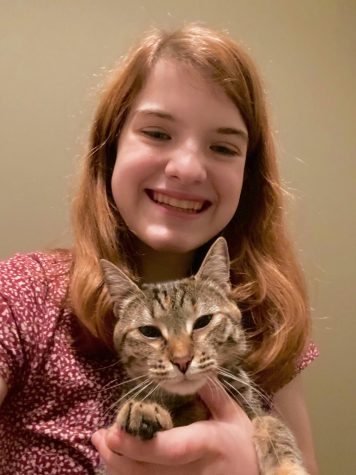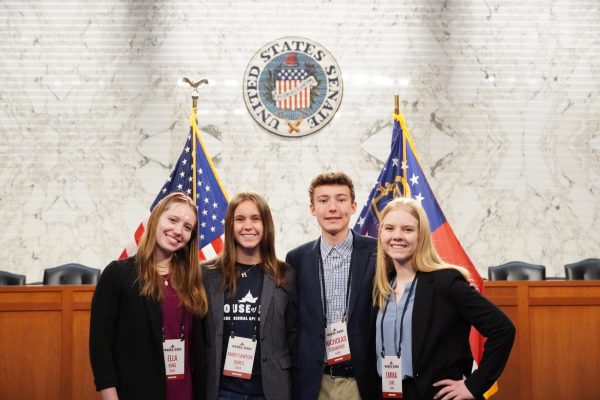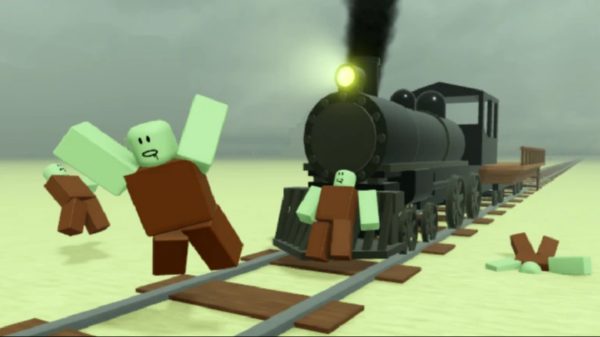From Chamblee to the BeltLine: Ryan Gravel’s Journey to a Better Atlanta
Photo courtesy of Ryan Gravel.
Gravel pictured in his office.
This is the first part of a two part series about Chamblee alumnus Ryan Gravel. The second part will be posted tomorrow.
Ryan Gravel has come a long way since his days at Chamblee Charter High School. As the visionary of the Atlanta BeltLine, Gravel has revolutionized the world—or at least Atlanta— opening new avenues for bikers, walkers and Atlantans to come together. His work has revitalized downtown through parks, trails, and greenspaces and created opportunities for all kinds of new innovation and entrepreneurship. It started as Gravel’s graduate thesis at Georgia Tech in 1999, and today, it’s an idea that has come to dominate the dialogue around Atlanta’s future. It has become an example for cities across the country and even the world to reconsider how they view their urban spaces and their future.
“[When I lived] in Chamblee, I drove across the top end of 285 to [my] job every day,” said Gravel. “I felt like I was part of the problem, not part of the answer, and so I went back to graduate school, back at Georgia Tech, for a city planning and architecture joint degree. My graduate thesis was the BeltLine. I was trying to think about how you could transform Atlanta to the kind of place I wanted to live in, where people could walk and take transit and just live a healthier, more sustainable kind of lifestyle and not have to spend all [their] time stuck in traffic.”
Gravel got the idea for the BeltLine from both his passion to develop healthier urban spaces and the possibility of transforming the railroads around Atlanta.
“I knew I liked railroads because I was always interested in railroads,” said Gravel. “When I went to Tech, I got interested in the role that the railroads play in shaping the original city of Atlanta, and so I knew there was this loop of old railroads around the city. I just thought I would think about what you could do with that that would make it into something else that would set up the city for a better future. I never imagined we would actually build it, but I thought it was a cool idea and I wanted to graduate.”
Gravel’s journey began at Chamblee Charter High School from 1987 to 1991.
“I had a good Chamblee experience,” said Gravel. “It was not the best time of my life, but it was good. I’m a twin, and so my twin was very popular and outgoing and had tons of friends, so that made it easier for me. I was in the Art Club and the German Club and FBLA [Future Business Leaders of America]. I had lots of good friends, some of whom I still keep in touch with.”
After high school, Gravel went to Georgia Tech and studied abroad in Paris, which gave him some of the ideas he transferred into the BeltLine.
“My senior year abroad in Paris […] changed my life,” said Gravel. “I fell in love with cities and really got interested beyond architecture in the design of the city itself, and how the shape of cities affects your life and makes things possible or creates limitations on the way that you live, that it matters what kind of city we build to the way that we live our lives.”
After graduating from Georgia Tech, Gravel’s idea came up at his new job.
“I graduated in December of 1999, and I went to work for an architecture firm. A lot of the work happened to be around the BeltLine [area] because people were moving back into the core of the region and downtown,” said Gravel. “We had one 20 acre site that was going to significantly increase the population of the adjacent neighborhood, and we were trying to decide if [we should] jam a parking garage up against the railroad or do something else. I was telling my coworkers about this idea I had in school and they thought it was cool, so we started talking to people about it and the more people we talked to, the more people wanted to hear about it.”
The idea caught on, and Gravel found himself in the midst of a creative period of brainstorming for Atlanta’s future.
“The short version of the story is we just kept talking to people. We got some good early political leadership and we got a lot of nonprofit partners on board with the vision who saw themselves as part of that larger shared vision,” said Gravel. “Citizen activists who had mostly been fighting against things saw something they could be fighting for. Between the summer of 2001 and the summer of 2004 was this magical time where this idea came out of nowhere and suddenly the whole city had fallen in love with this idea for the future. They lifted this project to life. They made it possible. They got the attention of the elected officials and the regional planners and the transit agency and everybody else who would have to be involved for something this big to come to life. It was something that obviously I was part of, but it was so much bigger than just me.”
According to Gravel, it was this element of community that differentiated the BeltLine from other urban design plans that failed.
“It wasn’t just a trail; it was also transit and community stabilization and economic development and public art and affordable housing and Brownfield remediation,” said Gravel. “There are so many different things that everybody could see themselves in it and get something from it, in a way that most urban plans and proposals don’t really do. Because you had all these different constituencies of people wanting the same outcome and seeing themselves as part of a shared future together, it was really powerful politically. It got the attention of the elected officials, so it not only empowered them to make the right decisions but at some point it obligated them to do it. When Mayor Reed had his first election in 2009, you couldn’t be a viable candidate for mayor without supporting the BeltLine and having some plan for how you were going to do it better and faster.”
Economically, the BeltLine has been very successful, but Gravel also sees other standards the city needs to focus on in the future.
“We’ve spent about $500 million on it so far,” said Gravel. “That’s mostly for land acquisition and construction of the parks and trails, and then in the same time period, we’ve seen over $4.5 billion of private investment. From an economic standpoint, it’s a wild success. Obviously, there are other metrics of success in terms of affordable housing, which we haven’t delivered quite yet on, and transit, which is not yet built, so we got a long way to go, but it is helping the city manage that growth and change.”
Over the last decade, the issues of affordability and gentrification have come to the forefront, as the desirability of the neighborhoods surrounding the BeltLine increases.
“The answer to economic and cultural displacement is not to not make it nice, to not build grocery stores or trails or parks,” said Gravel. “You don’t hold a community down just to keep it affordable. […] BeltLine or no BeltLine, in a growing community, anytime you make somewhere more desirable by making it better it’s the same challenge.”
Gravel sees these challenges as something we can combat.
“The challenge is rising taxes and rents,” said Gravel. “Those are economic challenges and we need economic solutions. The reality is there are all kinds of people that know what we should do. The problem is not that we don’t know the answer, the problem is that we’re not doing it, and so to me, it’s more about the cultural challenges and political pressure to make those hard choices, do the hard work and create the best policy that has a chance of delivering the outcomes that we want.”
Overall, Gravel sees the BeltLine as fostering healthy conversation about the direction of the city.
“It’s helping the city navigate the politics that come with change, and it’s elevating the issues that need to be elevated around who benefits from this change and who’s participating in the benefits of change, which are all very good things for us to be talking about,” said Gravel.
The city of Atlanta is growing fast and new solutions need to be found to properly handle this growth.
“The region is going to grow by 2.5 million more people in twenty years,” said Gravel. “That’s like moving Charlotte to Atlanta in twenty years, without even thinking about regional transportation. The economic pressure that puts on places that have walkable districts […] is going to be much greater than what we see today. That’s really exciting because there’s a lot of room for more people and more people is better for the city for lots of reasons, but we have to manage how that comes, so that it doesn’t displace the people who made Atlanta special in the first place.”
Gravel is optimistic.
“A lot of people don’t want the city to change, but that’s not really an option. The city is going to change. The question is who’s part of that change, who benefits from that change, who doesn’t benefit, who’s displaced, and how does the city manage that,” said Gravel. “I think in twenty years, Atlanta will be a wildly different place, hopefully a better version of itself. I think the aspirational answer is that we leverage all the change to grow into the best version of ourselves, but in order to do that, we have to continue to build the BeltLine and follow through on related policies around affordability and opportunity that apply not only to the BeltLine and the whole city. If we learn those lessons and apply them, we certainly have the chance of ending up with that aspirational version of the story.”
Though no longer a board member of the Atlanta BeltLine Partnership, Gravel’s story is still very much intertwined with the BeltLine.
“My kids were born along the way and now—I grew up, stuck in traffic driving on 285 going to the mall—and my kids are growing up with the BeltLine as a world view, riding their bike to school and the grocery store,” said Gravel.
Today, Gravel runs a urban design consultancy called SixPitch and a nonprofit focused on cultivating and supporting ideas about cities called Generator. He will be opening a restaurant on the BeltLine early next year, serving plant-forward, locally-based food and providing reliable funding for Generator.
Your donation will support the student journalists of Chamblee High School Blue & Gold. Your contribution will allow us to print editions of our work and cover our annual website hosting costs. Currently, we are working to fund a Halloween satire edition.

Catherine Cossaboom is a senior and editor of the Blue & Gold. In her free time, you can find her solving way too many math problems, going on wandering walks to make friends with the deer in her neighborhood, and training her kittens to compete at the next Kentucky Derby. In five years, she hopes to be traveling across the country, running math circles, writing columns, and turning math into a performance art to empower girls to take on the world's problems. This is her third year on the staff.












Meg • Sep 13, 2023 at 5:51 pm
Really well written article, Catherine. You have a bright future. (Chamblee class of ’74 and former Blue & Gold staff writer.)